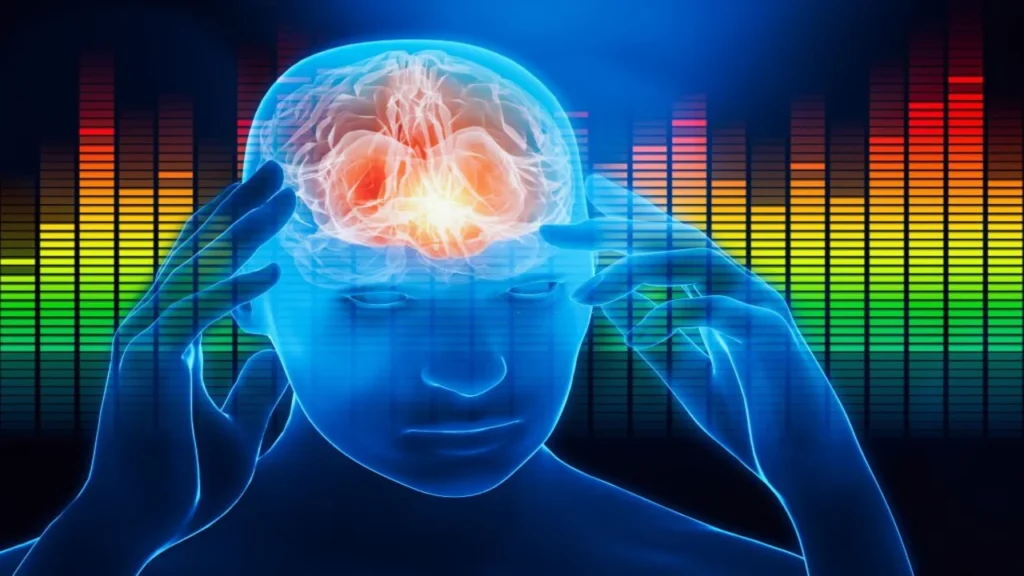Brain neuroscience is a field that focuses on the structure and function of the brain and nervous system. It is a rapidly growing field that has made significant progress in understanding the mechanisms underlying various neurological and psychiatric disorders, as well as the normal functions of the brain and nervous system.
One of the major tools used in brain neuroscience is neuroimaging, which allows scientists to non-invasively visualize the brain in action. Techniques such as magnetic resonance imaging (MRI), positron emission tomography (PET), and functional MRI (fMRI) provide detailed images of the brain and allow researchers to study brain activity in different regions.
Another important area of brain neuroscience is genetics. Advances in genetic sequencing have allowed scientists to identify specific genes that are associated with certain neurological and psychiatric disorders, such as Alzheimer’s disease and schizophrenia. This has led to the development of targeted treatments for these conditions.
One of the most exciting areas of research in brain neuroscience is the study of brain plasticity, or the ability of the brain to change and adapt throughout an individual’s lifetime.
It has long been believed that the brain is relatively fixed in its structure and function, but recent research has shown that the brain is actually quite malleable and can change in response to experiences and environmental influences. This has implications for the treatment of brain injuries and neurological conditions, as well as for the development of learning and memory.
Overall, brain neuroscience is an exciting and rapidly growing field that continues to make important discoveries about the structure and function of the brain.
As we learn more about how the brain works, we can develop better treatments and therapies for neurological and psychiatric disorders, and gain a better understanding of the complex processes that underlie normal brain function.
Neuroscience
The study of nervous system scientifically is called the neuroscience. Nervous system includes the central nervous system (Brain and spinal cord), the peripheral nervous system (autonomic and somatic). It’s functioning is to highlight issues created in nervous system.
These issues called the disorders. This branch of science is multidisciplinary, to understand the central and nascent properties of neurons, neural circuits and glia cells it involve anatomy, developmental biology, physiology, medicine, physics, Chemistry, cytology , molecular biology, psychology, computer science, mathematical modeling and statistics.
Molecular and Cellular Neuroscience

It is a branch of Neuroscience that explains the molecular biology with the biology of the nervous system, protein chemistry and molecular genetics with related methodologies. Molecular biology investigates how ribonucleic acid (RNA) is formed by deoxyribonucleic acid (DNA). It studies receptors, enzymes and ion channels to understand neural function.
Metabotropic receptors, inotropic receptors, signal transduction mechanisms, nervous system, receptor cloning, molecular anatomy, voltage gated, synaptic plasticity response, and ion channels are the fields explored by molecular neuroscientists.
Cellular neurobiology discusses the speed of transmission of message in the brain. A series of neurons, in which each transmit a signal that is called an action potential, conversing at synapses, are activated consecutively. Ion channels that are basically membrane proteins control the synaptic transmission and Action potentials.
Cognitive and Clinical Brain Neuroscience
Cognitive Science
Cognitive science is multiple disciplinary fields to understand cognitive functioning and mental process of human being; it includes the disciplines such as computer science, artificial intelligence (AI), neuroscience, philosophy, psychology, anthropology and linguistics.
It emphases on understanding the mental representations to realize, transform, process and employ knowledge and nature of the human mind.
Clinical Neuroscience
It is the branch of neuroscience that investigates the neurobiological foundations of various mental illnesses. It discuss the Neuro-anatomy, neurophysiology neurodevelopment and neurochemistry, it also describe the Traumatic brain injury, Addiction, Obsessive-Compulsive Disorder, Parkinson’s disease, Schizophrenia and Depression.
Clinical neuroscience describes the adaptive coping strategies, the nexus between mental and immune functions and hunger regulation.
Five specializations
- Cognitive Neuroscience: through the advanced brain stimulation (TMS, tDCS) techniques and brain imaging (fMRI, FNIRS, DWI, EEG) techniques, it studied the in-depth knowledge of perception and cognition and human brain functioning.
- Drug Development and Neuro-health: It provides practical experience in personalized healthcare, theoretical background in medicinal nutrition, pharmaceutical research and drug development.
- Fundamental Neuroscience: It describes the inferences of psychology and biology, as well as neurological and psychiatric disorders are investigated it also discuss the important molecular mechanisms of psychological processes happened in human brain.
- Neuropsychology: the branch of neuroscience that deals with brain structure and function resulting normal and abnormal behavior. It emphasis is on neuropsychiatric disorders and brain dysfunction related to inherited, acquired or degenerative brain.
- Psychopathology: It discus the mental health research requirements in clinical skills and theoretical background. It investigates the research questions that lead to prevention and intervention strategies. It also discusses the psychological, biological and social pathways leading to mental disorders.
Neuroscience of Change How to Reset Your Brain

Neuro-psychiatrists work at obsessive compulsive disorder (OCD) (much looked form of behavior, doing things again and again without control at nerves) at UCLA School of Medicine. They discuss the 4 basic subjects to modify the behavior and reset your brain activity.
1. Relabel
Brain gets a false message and get confused that is called the “brain glitch”. To reduce that brain glitch the first and most important task is to identify the rational and irrational thoughts then to train your brain about the false alarm.
2. Reattribute
The second and most important step is to answers the question, “Why do these thoughts reappear?” The brain is stuck in gear, misfiring, sending false messages and creating mental noise. When these irrational thoughts come to your mind you are able to say this is brain glitch.
3. Refocus
This is very tough task in which behavior is modified and brain focus is changed. You have to indulge yourself in another activity rather than the previous one; you are replacing your old behavior with new one that is positive and desirable task. Then the chemistry of brain changed and creating new mindset and pattern and information.
4. Revalue
In the fourth step it all comes together. You begin to see old patterns as simple interruptions in a consistent way to swap the old behavior with the new. You devalue your old thoughts as being completely insignificant. At least the brain works better, the old thoughts begin to fade. This is the time to reset your brain and modify your thoughts.
Neuroscience Exploring The Brain
Neuroscience is the study of the brain and nervous system. It is a multidisciplinary field that includes subjects like psychology, biology, chemistry and computer science. The brain is the most complex organ in the body, and it controls all aspects of behavior, including movement, sensation, thought, and emotion.
One of the most exciting areas of neuroscience research is the study of neural plasticity, the brain’s ability to change and adapt in response to new information and experiences. This process is considered the basis of learning and memory, and is also thought to play a role in the recovery of function after brain injury.
Another area of active research in neuroscience is the study of neural development. The brain undergoes many changes in the early years of life, and scientists are only now beginning to understand the complex processes that influence this development.
This research is helping to shed light on the causes of developmental disorders such as autism and ADHD, and it is also helping to inform the development of new treatments for these conditions.
The field of neuroscience is also making significant progress in understanding the neural basis of mental disorders such as depression, anxiety and schizophrenia. Through the use of advanced imaging techniques, scientists are now able to virtually study the brain and identify specific neural circuits and chemicals involved in these disorders.
This research is helping to inform the development of new treatments for these conditions, and it is also helping to improve our understanding of the underlying causes of these diseases.
The study of brain–computer interfaces (BCIs) is one of the most promising areas of neuroscience research. The technology allows direct communication between the brain and computer, allowing people with paralysis or other debilitating conditions to control devices such as prosthetic limbs or communication devices with their thoughts.
Finally, neuroscience is a rapidly growing field that is contributing to our understanding of the brain and nervous system. From the study of neural plasticity and development to the understanding of mental disorders and the development of new treatments, neuroscience is helping to improve the lives of people around the world.
Cognitive Neuroscience

Cognitive neuroscience is a subfield of neuroscience that focuses on the study of the neural mechanisms underlying cognitive processes such as perception, attention, memory, language, and decision-making.
It is an interdisciplinary field that combines insights and methods from neuroscience, psychology, and computer science to understand how the brain gives rise to mental experiences and behaviors.
Cognitive neuroscientists use a variety of techniques to study the brain, including functional magnetic resonance imaging (fMRI), electroencephalography (EEG), and transcranial magnetic stimulation (TMS).
These techniques allow researchers to measure changes in brain activity in response to different cognitive tasks, thereby revealing how different brain regions work together to support specific cognitive processes.
An important finding from cognitive neuroscience research is that different parts of the brain are specialized for different tasks. For example, the primary visual cortex is responsible for processing visual information, while the prefrontal cortex is involved in decision making and problem solving.
Studies have also shown that these regions work together in networks, with information flowing between different regions to support complex cognitive processes.
Cognitive neuroscience also has practical applications in areas such as education and rehabilitation. For example, research on how the brain learns and retains information can inform the design of more effective educational materials and techniques.
Furthermore, understanding the neural mechanisms underlying cognitive impairment in conditions such as stroke or brain injury may guide the development of rehabilitation programs to improve cognitive function.
Finally, cognitive neuroscience is a rapidly growing field that is contributing to our understanding of the neural basis of mental experiences and behavior. By combining insights and methods from neuroscience, psychology and computer science, cognitive neuroscientists are providing new insights into how the brain works and how we can improve human cognition.
Neuroscience Major
Neuroscience is a major graduate education program that focuses on the study of the brain and nervous system. This typically includes biology, chemistry, psychology, and math, as well as specialized neuroscience courses. Some programs may also include coursework in computer science, philosophy, or linguistics.
A typical undergraduate neuroscience program will include courses in the following areas:
Fundamentals of Neuroscience: This includes courses in neuroanatomy, neurophysiology, and neuropharmacology, which provide an understanding of the structure and function of the nervous system.
Cellular and Molecular Neuroscience: This field covers the molecular and cellular mechanisms that underlie neural function, including the study of neurons and glial cells, synaptic transmission, and neural development.
Systems Neuroscience: This field covers the nervous systems that underlie sensory, motor, and cognitive processes, including the study of vision, hearing, movement, and learning and memory.
Behavioral Neuroscience: This field covers the relationship between the brain and behavior, including the study of motivation, emotions, and mental disorders.
In addition to coursework, many neuroscience programs also provide opportunities for students to participate in research projects under the supervision of faculty members. This may involve working in a laboratory to conduct experiments, analyze data, and present research findings at conferences or scientific journals.
After completing a bachelor’s degree in neuroscience, students may choose to pursue graduate study in neuroscience or related fields such as neurobiology, psychology, or medical school. A neuroscience degree can also be useful for careers in fields such as research, health care and biotechnology.
It is important to note that different universities and colleges may have different requirements for neuroscience programs, so it is important to research the specific curriculum and requirements of the institutions you are interested in.
Nature Neuroscience

Nature Neuroscience is a leading journal in the field of neuroscience, publishing cutting-edge research on the latest discoveries and advances in the field. Journal articles cover a wide variety of topics including neurodevelopment, neural plasticity, neurodegenerative diseases, and neural computation.
In addition to original research articles, the journal also includes reviews and perspectives, providing readers with an in-depth look at the most important and exciting developments in the field.
The journal also has a blog section where researchers, neuroscientists and science enthusiasts can find news, opinion and analysis of the latest discoveries and developments in neuroscience.
These blog posts are written by leading neuroscientists and experts in the field, informing readers about the latest research and its implications for understanding the brain and treating neurological disorders.
The blog is an excellent resource for anyone interested in keeping up with the latest developments in neuroscience, and it also provides a forum for neuroscientists to share their insights and perspectives in the field.
Whether you are a researcher, student, or generally interested in the brain and how it works, the Nature Neuroscience blog is the place to stay informed and up to date on this dynamic and rapidly updating research. there is a place. valuable resource. is a resource. developing area.
Behavioral Neuroscience

Behavioral neuroscience is a subfield of neuroscience that focuses on the study of the biological and neural mechanisms underlying behavioral and mental processes. This field of study bridges the gap between neuroscience and psychology by using techniques from both fields to understand how the brain and nervous system affect behavior.
Behavioral neuroscientists study a variety of behaviors, including emotion, motivation, learning, memory, perception, and cognition. They use a variety of methods to study behavior, including neuroanatomy, neurophysiology, neuropharmacology, neuroimaging, and genetics.
Behavioral neuroscientists also use a variety of experimental techniques, such as operant and classical conditioning, lesion studies, and neuroimaging, to study behavior in animals and humans.
One of the key findings from behavioral neuroscience research is that different brain regions are specialized for different functions, and that these regions work together in networks to support complex behaviors. For example, studies show that the hippocampus is important for forming new memories, while the amygdala is involved in emotional processing.
Behavioral neuroscience also has practical applications in fields such as psychology, neuroscience, and psychology. For example, research into the neural mechanisms underlying mental disorders such as depression and anxiety may inform the development of new treatments for these conditions.
Furthermore, understanding the neural basis of learning and memory may inform the development of educational techniques that are more effective at promoting long-term retention of information.
Finally, behavioral neuroscience is a rapidly growing field that is contributing to our understanding of the neural basis of behavior and mental processes. By combining insights and methods from neuroscience and psychology, behavioral neuroscientists are providing new insights into how the brain works and how we can improve human behavior.
Riverhills Neuroscience

Riverhills Neuroscience is a leading provider of neurological research, diagnosis, and treatment. We specialize in caring for patients with a wide range of neurological conditions, from headaches to strokes and Alzheimer’s disease. Our team of experienced neurologists and scientists is dedicated to providing the highest quality of care, with a focus on patient safety, comfort, and satisfaction.
We are committed to advancing the science and practice of neuroscience, and we strive to provide the best possible care for our patients. Please visit our website for more information about our services and how we can help you.
We are a premier healthcare provider with a commitment to providing high-quality and compassionate care to our patients. Our physicians and staff are dedicated to providing the best possible healthcare experience and strive to ensure that our patients feel comfortable and secure in their care.
We offer a wide range of services and treatments, and our team is always available to answer any questions you may have about our services.
Neuroscience Group

Neuroscience is a multidisciplinary field that involves the study of the nervous system including the brain, spinal cord, and nerves. It is a rapidly growing field with a wide range of research areas and applications.
The Neuroscience Group is a collection of researchers, scientists and clinicians who work together to study the nervous system and its functions. These groups can be found at universities, research institutes, medical centers, and private companies.
Neuroscience groups often focus on specific areas of research such as cognitive neuroscience, which studies brain processes influenced by the nervous system, such as cognition, memory, and decision making. or behavioral neuroscience, which investigates the underlying biological and neural mechanisms.
Other groups may focus on specific disorders of the nervous system, such as neurodegenerative diseases or neurodevelopmental disorders.
Research in neuroscience groups often involves a variety of techniques, including neuroanatomy, neurophysiology, neuropharmacology, neuroimaging, and genetics.
These groups also use a variety of experimental techniques to study the nervous system in animals and humans, such as using animal models of disease, brain imaging studies, or studying the effects of drugs on the brain.
One of the major goals of neuroscience research is to understand the neural mechanisms underlying normal and abnormal behavior and to develop new treatments for neurological and psychiatric disorders.
Neuroscience groups also often collaborate with other researchers and scientists in related fields, such as psychology, psychiatry, and computer science, to bring together different methods and techniques to better understand the brain and nervous system.
Finally, neuroscience groups are an important part of the research community, working to advance our understanding of the brain and nervous system and to develop new treatments for neurological and psychiatric disorders.
These groups bring together researchers, scientists, and clinicians from diverse disciplines to work toward the common goal of understanding the brain and improving human health.
Computational Neuroscience

Computational neuroscience is a subfield of neuroscience that uses mathematical and computational methods to study the nervous system. It combines principles from neuroscience, mathematics, physics, computer science and engineering to create a theoretical framework for understanding how the brain works.
Computational neuroscientists use mathematical models and computer simulations to study the neural processes that underlie perception, cognition, and behavior. They also develop algorithms and tools for analyzing large amounts of neural data, such as brain imaging data or recordings of neural activity.
One of the main goals of computational neuroscience is to understand how the activity of large populations of neurons gives rise to complex behavior and mental processes.
Researchers in this field use various techniques, such as computer simulations of neural networks, to study how neurons interact and communicate with each other. They also use mathematical models to understand the dynamics of neural activity and how it is affected by external stimuli.
Computational neuroscience also has a wide range of applications, including the development of new brain-machine interfaces, the design of more efficient neural prostheses, and the creation of more realistic computer simulations of the brain.
It also has applications in the field of artificial intelligence, as the study of neural computations can provide insight into designing intelligent systems.
Finally, computational neuroscience is a rapidly growing field that is contributing to our understanding of the brain and how it works.
By using mathematical and computational methods, computational neuroscientists are able to gain new insights into the behavior and mental processes of complex nervous systems, which may improve our understanding of the brain and the neurobiology and pathogenesis of mental disorders . may provide new insights. This will help in the development of treatments.
Sage Neuroscience

However, it is possible that Sage Neuroscience is a private research organization that focuses on research in various aspects of neuroscience, such as cognitive neuroscience, behavioral neuroscience, neurodegenerative diseases, neurodevelopmental disorders or computational neuroscience. , it may also be a medical facility that specializes in the treatment of neurological and psychiatric disorders.
Neuroscience is the scientific study of the nervous system, including both its development and function. It covers a wide range of topics, such as brain anatomy, sensory processing, memory formation, and motor control.
Sage Neuroscience is a great resource for learning more about the brain and its functions. They provide a range of courses on a variety of neuroscience topics, including lectures, tutorials, and interactive quizzes. He also has a blog and podcast with interviews with experts in the field.
Neuroscience Psychology

Neuroscience and psychology are closely related fields that study both the brain and behavior. However, they have different approaches and focus on different aspects of mind and behavior.
Neuroscience is a biological and physical science that studies the structure and function of the nervous system, including the brain, spinal cord, and nerves. It focuses on understanding the underlying neural mechanisms that give rise to behavior and mental processes. This may include neuroanatomy, neurophysiology, neuropharmacology, and neuroimaging studies.
On the other hand, psychology is a social and behavioral science that studies the mind and behavior. It focuses on understanding how the brain processes information and how behavior is influenced by cognitive, emotional, and social factors. This may include the study of cognition, memory, emotion, motivation, and social behavior.
Although neuroscience and psychology may have different focuses and approaches, they both contribute to understanding the mind and behavior and often overlap in their research. Therefore, many researchers in both fields use methods from both neuroscience and psychology to study the brain and behavior.
For example, cognitive neuroscientists, a subfield of cognitive psychology, use techniques such as brain imaging to study cognitive processes such as memory, attention, and decision making. Similarly, biological psychologists, a subfield of neuroscience, use psychological techniques, such as behavioral experiments, to study how the brain and nervous system influence behavior.
Finally, neuroscience and psychology are both important fields that contribute to understanding our mind and behavior. Although their approaches differ, they often overlap in their research and both are essential to a complete understanding of the mind and behavior.
Understanding The Brain: Using Neuroscience to Deliver Better Business Results

Understanding the mind and how it works can have a significant impact on improving business results. Neuroscience can be used to improve a wide range of business practices, including marketing, human resources, and product design.
One area where neuroscience has been applied to business is marketing. By understanding how the brain processes information and makes decisions, companies can design more effective marketing campaigns and advertisements.
For example, neuroimaging techniques such as functional magnetic resonance imaging (fMRI) can be used to study how people respond to different types of advertising, making companies more attractive and effective. Helps create advertisements. Help create.
In human resources, neuroscience can be used to improve employee selection, training, and development. By understanding how the brain learns and processes information, companies can design more effective training programs and select candidates who are better suited for specific roles.
Additionally, neuroscience can be used to study how stress, emotions, and motivation affect employee performance, helping managers create more positive work environments and improve employee productivity. help improve.
In product design, neuroscience can be used to understand how people interact with products and design products that are more user-friendly. For example, by studying how the brain processes visual information, companies can design products with more intuitive interfaces that are easier for people to use.
Additionally, by studying how the brain processes touch and other sensory input, companies can design products that are more comfortable and satisfying to use.
Ultimately, neuroscience can be used to achieve better business results by providing a deeper understanding of how the brain works and how people make decisions. By applying this knowledge, companies can create more effective marketing campaigns, improve employee productivity, and design products that are more user-friendly.
Brain Model for Neuroscience

There are many different models of the brain that are used in neuroscience research to aid in understanding the structure and function of the brain. These models can be broadly divided into two categories: structural models and functional models.
Anatomical models of the brain focus on the physical structure and organization of the brain. These models may include detailed pictures of the brain’s anatomy, such as the location of different areas of the brain, their connections, and the different types of cells that make up the brain.
A popular anatomical model of the brain is the “brain atlas”, a detailed map of the brain showing the location of different brain regions and their connections.
On the other hand, functional models of the brain focus on how the brain processes information and generates behavior. These models may include mathematical simulations of neural activity, such as neural networks used in artificial intelligence and machine learning, or theoretical frameworks that describe how different brain regions interact to generate behavior.
For example, there are “three-brain” models that describe the brain. Consists of three functional layers: Reptilian, Paleolithic and Neomammalian.
Another useful model is the connectome, which is a map of all the connections between neurons in the brain. This approach is relatively new and is expected to provide a better understanding of brain function by describing whole brain activity as a dynamic network of interconnected neurons rather than as isolated brain regions.
Finally, many different models of the brain are used in neuroscience research, each with their own strengths and weaknesses. Structural models provide a detailed understanding of the physical structure and organization of the brain, while functional models focus on how the brain processes information and generates behavior.
By using a combination of different models, researchers can gain a more complete understanding of the brain and how it works.
Neuroscience for Leadership Harnessing the Brain Gain Advantage

By providing a deeper understanding of the mind and how it works, neuroscience can be used to gain a competitive advantage in leadership. By applying this knowledge, leaders can improve their own performance and the performance of their teams.
One area where neuroscience can be applied to leadership is in decision making. The brain is constantly processing information and making decisions, and understanding how this process works can help leaders make better decisions.
For example, research has shown that the prefrontal cortex of the brain, which is involved in decision making, is more active when people are faced with complex or uncertain situations. By understanding this, leaders can take steps to improve their decision-making skills, such as gathering more information or seeking diverse perspectives.
Another area where neuroscience can be applied to leadership is understanding and managing emotions. Emotions play an important role in how people think and behave, and leaders who are able to effectively manage their own emotions and the emotions of others can gain a competitive advantage.
For example, neuroscience research has shown that the brain’s amygdala, which is involved in emotion processing, can be trained to respond differently to stressful situations, improving emotional regulation. and increased flexibility.
Additionally, neuroscience can be used to improve communication and influence. By understanding the neural mechanisms behind communication and persuasion, leaders can improve their ability to communicate effectively with others and influence their decisions.
For example, research has shown that people are more likely to be influenced by messages sent in a positive and empathetic way, this is called ‘neuro-linguistic programming’.
Finally, neuroscience can be used to gain a competitive advantage in leadership by providing a deeper understanding of the brain and how it works. By applying this knowledge, leaders can improve their own performance and the performance of their teams in areas such as decision making, emotional management, and communication.
Neuroscience Brain Development

Neuroscience is the study of the brain and its development, a complex and dynamic process that begins in the womb and continues throughout life. The brain develops rapidly during the first few years of life and continues to grow and change in response to experiences and environmental factors.
During prenatal development, the brain begins to form early in pregnancy and goes through several stages as it develops. The earliest stage, called the neural plate stage, is when a small sheet of cells in the embryo develops into a tube that will eventually become the brain and spinal cord.
This is followed by the neural crest stage, in which the brain and spinal cord begin to differentiate into distinct regions.
After birth, the brain continues to develop and change through a process called neuroplasticity, which is the brain’s ability to reorganize itself in response to new experiences and learning. This process is particularly active during early childhood and adolescence, when the brain is rapidly forming new connections and reorganizing existing ones.
During early childhood, the prefrontal cortex of the brain, which is involved in decision making, problem solving, and attention, is developing rapidly. This is also the time when children begin to develop important social and emotional skills such as empathy and self-control.
Adolescence is also a critical period of brain development, during which the brain’s prefrontal cortex matures and the brain’s reward system, which is involved in motivation and decision-making, becomes more active. This period is also associated with increased risk-taking behavior and changes in mood and behavior.
In adolescence, the brain continues to change in response to experiences and environmental factors, but at a slower rate than in childhood and adolescence. The structure and function of the brain can change in response to learning new skills, experiencing stress, and aging.
In conclusion, the brain is a complex and dynamic organ that undergoes several stages of development, beginning in the womb and continuing throughout life. Understanding brain development can provide insight into how different experiences and environmental factors affect brain function and behavior.






